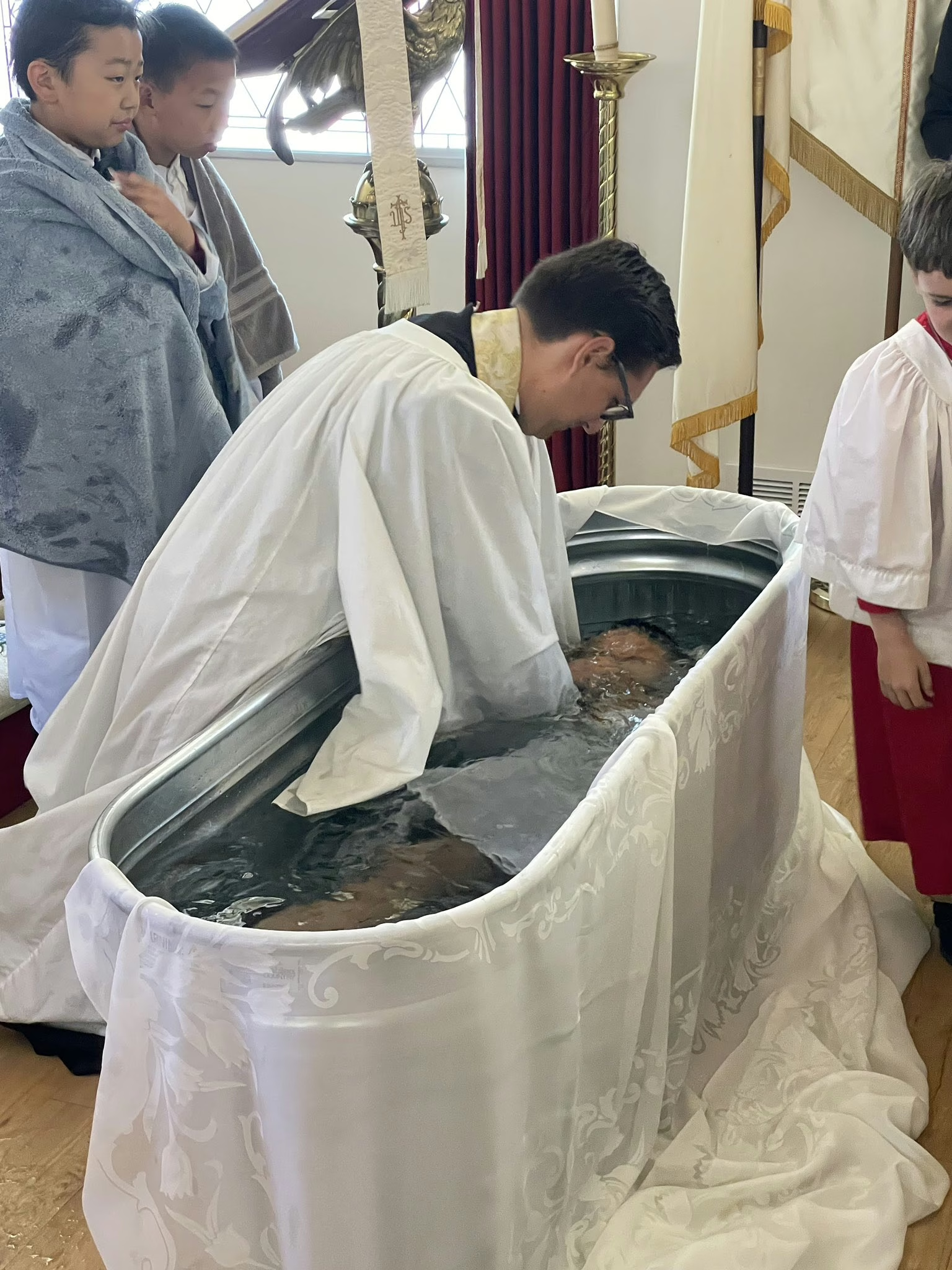Over the past few weeks, it has been my great joy to administer the sacrament of Holy Baptism to several members of our church and school community—two infants and three students from Canterbury Christian School.
What is the biblical mode of baptism—immersion, pouring, or sprinkling?
While infant baptism is fairly familiar in most Anglican parishes, the baptism of the three Canterbury students was done by full immersion—something less commonly seen in Anglican churches, but entirely within our tradition. The Book of Common Prayer provides for baptism by immersion or pouring, and this flexibility reflects ancient Christian practice.
The 1662 Book reads:
¶ Then shall the Priest take each person to be baptized by the right hand, and placing him conveniently by the Font according to his discretion, shall ask the God-fathers, and God-mothers the Name: and the shall dip him in the Water, or pour Water upon him, saying.
N. I baptize thee, In the Name of the Father, and of the Son, and of the holy Ghost Amen.
In fact, the Didache, one of the earliest Christian teaching documents, describes immersion as the standard, while allowing for pouring when necessary. The section commonly called Ch. 7 reads:
“And concerning baptism, baptize this way: Having first said all these things, baptize into the name of the Father, and of the Son, and of the Holy Spirit, Matthew 28:19 in living water. But if you have not living water, baptize into other water; and if you can not in cold, in warm. But if you have not either, pour out water thrice upon the head into the name of Father and Son and Holy Spirit. But before the baptism let the baptizer fast, and the baptized, and whatever others can; but you shall order the baptized to fast one or two days before.” (source)
The Scriptural Symbolism is Stronger in Pouring/Sprinkling
Still, I personally believe that the symbolism of sprinkling or pouring better reflects the biblical imagery of cleansing, as Duane Spencer explores in his excellent book Holy Baptism. Spencer’s book Holy Baptism:Word Keys Which Unlock the Covenant explores the theological foundations of baptism by examining Old Testament rites such as circumcision, ritual washings, priestly consecration, and covenantal symbols. Through detailed word studies and typological analysis, Spencer connects these practices to Christian baptism, emphasizing its covenantal and sacramental significance through the sprinkling and pouring rituals for priests and kings.
Is Baptism by Sprinkling or Immersion Valid?
The claim that baptism by immersion is the only valid mode because it symbolizes being “buried with Christ and raised with Him” (see Romans 6:4; Colossians 2:12) rests on a flawed assumption about ancient burial practices.
In the First-Century Jewish and Near Eastern context, burial was not typically by interment in the ground, as in modern Western practice. Instead, the dead were placed in rock-cut tombs or sepulchres—caves, chambers, or carved niches—like the one where Jesus Himself was laid (Luke 23:53, John 19:41).
“And they laid him in a sepulchre that was hewn in stone, wherein never man before was laid.” (Luke 23:53, KJV)
Therefore, being “buried with Christ” does not require being submerged in the earth or water. In Christ’s case, burial meant being laid horizontally into a stone tomb, with no immersion involved.
Whether by immersion or affusion, what matters most is the grace conferred and the covenant made—uniting each baptized person with the death and resurrection of Jesus Christ. This child is regenerate.
What is the Anglican View of Baptism?
The 39 Articles teach that Holy Baptism is more than a symbol—it is a Sacramental means by which God works, indelibly marking Christians as part of the Church covenantally and sealing His promises of forgiveness and adoption. They also affirm infant baptism as consistent with Christ’s teaching and the practice of the early Church.
The 27th Article reads:
“Baptism is not only a sign of profession, and mark of difference, whereby Christian men are discerned from others that be not christened, but it is also a sign of Regeneration or New-Birth, whereby, as by an instrument, they that receive Baptism rightly are grafted into the Church; the promises of the forgiveness of sin, and of our adoption to be the sons of God by the Holy Ghost, are visibly signed and sealed, Faith is confirmed, and Grace increased by virtue of prayer unto God. The Baptism of young Children is in any wise to be retained in the Church, as most agreeable with the institution of Christ.”

Leave a ReplyCancel reply